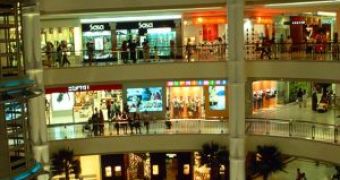Researchers from MIT have shown that people are most susceptible to be influenced by advertisers and promotions at the entrance of the store. According to the scientists, people usually don't have their shopping goals very clearly pre-determined; they decide not only what specific product to buy but also what kind of product they want to buy during their wondering through the supermarket's aisles.
"Consumers start with fuzzy shopping goals, which become more concrete as the shopping experience progresses," explain Leonard Lee and Dan Ariely. "Because of the initial lack of concreteness of their goals, consumers' sensitivity to external cues is likely to be higher in the earlier stage of their shopping when their goals are more malleable."
Lee and Ariely have conceived a series of tests showing that consumers can be influenced to spend more or less than usual, depending on the conditional coupons presented to them at the entrance. On the other hand, when the coupons were given inside the store they had little effect.
"When the required spending level is higher than their typical spending level, they spend more; when the required spending is lower, they spend less," write the authors. "This experiment also demonstrates that customers' spending tends to shift with the minimum spending conditions stated on their coupons."
In another related study, also to appear in the forthcoming issue of the Journal of Consumer Research, researchers from the Northwestern University have documented the so-called paradox of choice: customers generally want to have as many options as possible but at the same time want to be able to decide what to buy as easily as possible.
Alexander Chernev explained how we generally get around this paradox by observing that our shopping experience is "a decision process that comprises two different stages: selecting an assortment and, subsequently, selecting a particular option from that assortment."
Thus, the two conflicting goals, "maximal flexibility and minimal decision complexity", each operate in a different stage of the shopping experience. The interesting conclusion of the study is that large stores may get many customers inside (because the goal of maximal flexibility functions in the first stage of the shopping experience), but then these customers may not buy so many products as they otherwise would (in a smaller store) simply because they cannot decide (the decision complexity is too large).
In other words, large stores attract many customers but there is a downfall: "increasing the size of the assortment tends to complicate the decision process and decrease the overall probability of purchase", writes Chernev. Thus, there exists an optimal size of the store, optimal in the sense that customers are spending in there the largest amounts of money buying the largest number of products.

 14 DAY TRIAL //
14 DAY TRIAL //